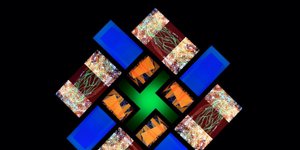Sublime
An inspiration engine for ideas

Along with beta-galactosidase, E. coli makes the protein permease, which sucks lactose molecules into the microbe. When a reluctant E. coli’s lac operon switches on briefly, some of these permeases get produced. They begin pumping more lactose into the microbe, and that extra lactose can pull away more repressors.
Carl Zimmer • Microcosm: E. coli and the New Science of Life
Perhaps the greatest “phase transition” in our thinking that such an approach could engender is the maturation in our willingness to live with relatively high levels of uncertainty in the domains of complex phenomena—and thus give up on ideas like complete “cures,” the elimination of “risk,” the design of perfect “stability,” and achieving total
... See moreJessica C. Flack • Worlds Hidden in Plain Sight: The Evolving Idea of Complexity at the Santa Fe Institute, 1984–2019 (Compass)
switches on, E. coli does not produce a smoothly increasing supply of the corresponding protein.
Carl Zimmer • Microcosm: E. coli and the New Science of Life
each E. coli usually contains about three repressors. They spend most of their time sliding up and down the microbe’s DNA, searching for the lac operon. It takes only a few minutes for one of them to find it and shut down the production of beta-galactosidase.
Carl Zimmer • Microcosm: E. coli and the New Science of Life
Et les bactéries d'Edmond ? – Lui-même déclarait qu'il ne faisait qu'étudier ses ancêtres. Disons qu'il remontait un peu plus haut que la normale dans son arbre généalogique…
Bernard Werber • Les Fourmis (French Edition)
E. coli has no wires that scientists can pull apart to learn how its circuits work. Instead, they must do experiments of the sort Jacob and Monod carried out. They observe how quickly the bacteria respond to their environment, how quickly they make a certain protein or clear another one away. Scientists combine the results of experiment after
... See moreCarl Zimmer • Microcosm: E. coli and the New Science of Life
On EcoCyc you can learn about the network of genes that controls when pyrD switches on and off.
Carl Zimmer • Microcosm: E. coli and the New Science of Life
No one at the time had a good explanation for how genes in E. coli or its prophages could be quiet one moment and busy the next. Many scientists had assumed that cells simply churned out a steady supply of all their proteins all the time.